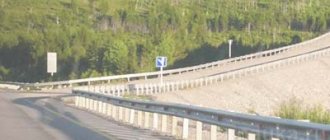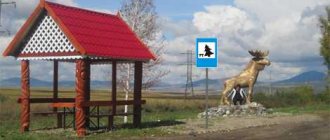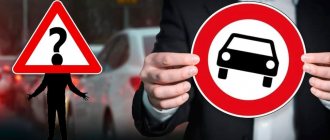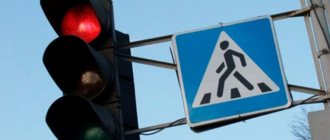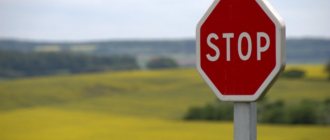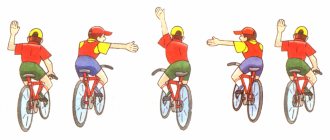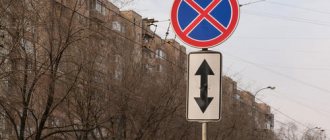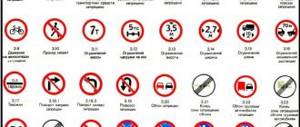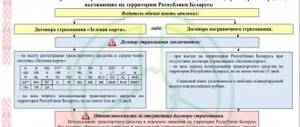Traffic rules of the Republic of Belarus 2021
The Traffic Rules given in this section are the current Traffic Rules of the Republic of Belarus 2021, improved with hyperlinks and pop-up help windows (changes and additions to Decree No. 349 of the President of the Republic of Belarus dated August 10, 2015 and subsequent decrees are taken into account).
The source of information is the National Register of Legal Acts of the Republic of Belarus. Reference data bank of legal information of the Republic of Belarus.
The Traffic Rules highlight special active elements . The active element of the text in the traffic rules of the Republic of Belarus is an indication in the text of the Rules to another paragraph of the Rules, to the number of the road sign or to a term and other instructions. The graphical active element in the traffic rules is all images of road signs and road markings, as well as images of road traffic lights.
In the Traffic Regulations of the Republic of Belarus, a hint window and a hyperlink are attached to the active element.
The traffic rules of the Republic of Belarus contain implicit terms. Such an implicit term of the traffic rules, for example, is the term “Congestion”, and its definition: “Congestion is a cluster of other vehicles stopped on the roadway” is obvious from clause 53.2 of the traffic rules:
"53.2. when a vehicle is forced to stop on the roadway and in places where stopping is prohibited, with the exception of stopping the movement of the vehicle due to the accumulation of other vehicles stopped on the roadway (hereinafter referred to as a traffic jam).”
Note that additional emphasis on implicit terms allows you to better understand the Rules of the Road! We found about 20 such implicit terms in the traffic rules of the Republic of Belarus.
Interactivity in the online traffic rules of the Republic of Belarus is ensured as follows:
- When the mouse cursor hits an active element of the traffic rules text, a pop-up window appears with the corresponding additional information. In paper version, such information often has to be looked for by turning page by page of a traffic rules book;
- when the mouse cursor hits a graphical active element (road sign, markings, traffic light), a pop-up window appears with the corresponding additional information on this graphic element of the Traffic Rules;
- following a link from any active element of the traffic rules text to the corresponding electronic page of the Traffic Rules.
Pop-up help windows may also use implicit traffic rules terms, various traffic rules groupings and creative traffic rules memos.
Closely related to the Belarus traffic rules section is another section of the website “Road Rules 2020” - Express tests. Express tests are a new type of testing according to the Belarusian Traffic Rules. This type of testing covers all points of the traffic rules and tests the test taker for accurate knowledge of the important requirements of the Rules. At the same time, express tests for traffic rules are quick tests that do not take much time during the testing process. Express tests are quick and easy. A quick question in electronic form is a high-tech, informative and educational question. Compared to classic traffic rules testing of the form “Question - Illustration (if any) - Answer options", express testing is an alternative test and has its advantages.
Select below what interests you in “Traffic Regulations Belarus” now: chapters of the Rules, appendices to the Rules, decrees of the President of the Republic of Belarus:
Expand all Decrees of the President of the Republic of Belarus in the section “Traffic Rules Belarus”
Expand all Chapters of Traffic Regulations (27 chapters) in the section “Traffic Regulations Belarus”
Expand Appendix 1 “Road traffic lights” in the section “Traffic rules Belarus”
Expand all chapters and paragraphs of Appendix 2 “Road Signs” (2 chapters, 7 paragraphs in each chapter) in the “Traffic Rules for Belarus” section
Expand all chapters of Appendix 3 “Road markings” (3 chapters) in the “Traffic rules for Belarus” section
Expand all chapters of Appendix 4 “List of vehicle malfunctions” (7 chapters) in the “Traffic Rules for Belarus” section
Expand Appendix 5 “Vehicle identification marks” in the “Traffic rules for Belarus” section
Go to the Express tests section of the site.
A little information on the traffic rules of the Republic of Belarus:
There are not enough illustrations in the decrees of the President of the Republic of Belarus on traffic rules. In 2009, a scientific and practical publication appeared - a commentary on the Traffic Rules, 560 pages in size with black and white illustrations.
The commentary to the Traffic Rules does not currently reflect the important changes made to the Traffic Rules by Decree of the President of the Republic of Belarus dated October 13, 2014 No. 483 “On Amendments and Additions to the Traffic Rules.”
New road signs have appeared in Belarus
The “mother and daughter” sign can be seen next to pedestrian crossings near schools, kindergartens, and healthcare institutions. This additional information sign (plate) will be placed facing pedestrians, writes ABW.BY.
Changes have been made to the installation of signs for cyclists and pedestrians.
It is allowed, in agreement with the traffic police, to use existing sidewalks for cycling by marking out pedestrian and bicycle paths on the sidewalk using markings 1.1. In this case, the minimum width of the roadway must be ensured:
- for pedestrian traffic - at least 1.5 m;
- for cycling in one direction - at least 1.75 m, in two directions - at least 2.5 m.
To designate rural settlements, except for agricultural towns, signs 5.22.1 should be used. Smaller villages will be indicated by more economical, smaller signs.
Supplemented with STB signs (with installation rules) regarding toll roads. Gas station signs with charging stations appeared. And also new plates 7.4.9 and 7.25.
On sections of roads where the traffic rules set a maximum speed limit of 20 km/h (in residential areas, courtyards and adjacent areas), sign 1.16.1 “Artificial unevenness” may not be installed and the corresponding markings may not be applied.
STB has also been supplemented with a section “Road mirrors”. Mirrors can be installed on sections of roads where the distance of longitudinal and transverse visibility is less than the standard value.
One of the most important changes is the regulation of the use of the RADAR mark. Sign 1.36 “Traffic mode control” must be installed in places where special technical equipment operating in automatic mode is used and has the functions of photography, filming, and video recording. Sign 1.36 should be installed outside a populated area at a distance of 150-300 meters to the installation site of special technical equipment, and in populated areas - at a distance of 50-100 meters.
In places where stationary special technical means are used, it is planned to install permanent road signs, in places where mobile special technical means are used - temporary signs on portable stands.
And on sections of roads with a dividing strip, the sign must be duplicated on the dividing strip. This is one of the most important innovations, since the lack of duplication of the RADAR sign on major highways puts road users at an unequal position.
Paragraph 2. Priority signs
11. Priority signs establish the order of passage through intersections, intersections of individual carriageways, narrow sections of roads, as well as the order of passage of railway crossings and other individual sections of roads, the traffic on which is not regulated by signals from a traffic controller or traffic light.
12. Priority signs include the following:
2.1. The main road.
The right of priority through an intersection (intersection of roadways) is granted.
2.2. End of the main road.
The right of priority through an intersection (intersection of roadways) is abolished.
2.3.1. Intersection with a secondary road.
2.3.2, 2.3.3. Junction of a secondary road.
Junction of a secondary road: 2.3.2 - on the right, 2.3.3 - on the left
2.3.4. Intersection of equivalent roads.
Approaching an intersection of equal roads where the requirements of paragraph 110 of the Rules apply
2.4. Give way.
It is necessary to give way to vehicles moving on the road being crossed, and if there is a sign 7.13 - to vehicles moving on the main road, as well as on the right along an equivalent road. A sign placed on a main road also marks the end of the main road
2.5. Driving without stopping is prohibited.
It is prohibited to drive without stopping in front of sign 2.5 or sign 5.33 (horizontal road markings 1.12), and in their absence - in front of the edge of the roadway being crossed. It is necessary to give way to vehicles moving on the road being crossed, and if there is a sign 7.13 - to vehicles moving on the main road, as well as on the right along an equivalent road. When approaching a section of the road on which a sign is installed, as well as a railway crossing through which movement is not prohibited, the driver must stop in front of sign 2.5 or sign 5.33 (horizontal road markings 1.12)
2.6.1, 2.6.2. Advantage of oncoming traffic.
It is prohibited to enter a section of road if this may impede oncoming traffic. It is necessary to give way to vehicles located on this section of the road or on the opposite approach to it
2.7. Advantage over oncoming traffic.
A section of road on which the driver has priority over oncoming vehicles.
13. Sign 2.1 is installed immediately before the intersection, including with sign 7.13 - before the intersection with a complex layout or at which the main road changes direction. In this case, outside populated areas, before the intersection at which the main road changes direction, sign 2.1 is repeated: the first sign 2.1 with signs 7.1.1 and 7.13 is installed at a distance from 100 to 150 meters before the intersection, the second sign 2.1 with sign 7.13 is immediately before the intersection .
Sign 2.1, installed with sign 5.22.1 or 5.22.2, provides priority when passing through all intersections of a populated area located on a given road.
14. Signs 2.1, 2.4, 2.5 installed at controlled intersections do not determine the order of passage of intersections and individual roadways, but inform drivers that the intersections are marked.
15. Signs 2.3.1–2.3.3 are used outside populated areas to indicate roads on which priority is given when passing intersections, and are installed at a distance of 150 to 300 meters from the intersection.
Sign 2.3.4 is installed outside populated areas at a distance of 150 to 300 meters, and in populated areas - as a rule, at a distance of 50 to 100 meters from the intersection.
16. Sign 2.4 is installed immediately before the intersection, and if there is an acceleration lane, before the beginning of this lane. Before the intersection where the main road changes direction, sign 2.4 is installed with plate 7.13.
Outside populated areas on roads with improved surfaces, sign 2.4 with plate 7.1.1 or 7.1.2 is installed at a distance of 150 to 300 meters before the intersection. In populated areas, sign 2.4 with plate 7.1.1 or 7.1.2 can be installed at a distance of 50 to 100 meters from the intersection.
